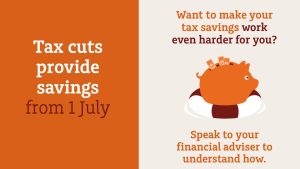Key events in June 2022
- The Russia-Ukraine war continues with tragic consequences and continued disruptions in commodity supplies. Energy and food prices remain high given these persistent political risks and supply concerns.
- Production delays and high transport costs are also contributing to high global inflation.
- Consumer annual inflation has surged to 8.6% in the US and 8.5% in Europe.
- Central banks are rapidly raising interest rates to contain inflation. The US central bank raised interest rates by 0.75% in June while Australia’s central bank raised the interest rate by 0.5%.
- Global shares fell sharply in June in response to inflation concerns, interest rate risks and worries that the global economy was headed to a sharp slowdown or even a recession. Wall Street’s benchmark S&P 500 Index declined -8.3% in June while Europe’s Stoxx 50 Index fell -8.8%.
- Australian shares were weak in June with similar falls to their US and European counterparts. The ASX 200 recorded a sharp price fall of -8.8%. The Financial (-11.9%) and Real Estate Investment Trusts (-10.3%) sectors led the market declines given their sensitivity to rising interest rates. The Resources sector also disappointed with a large -10.6% fall with the recent slide in iron ore and metal prices. The only island in a sea of red ink was a small gain for the Consumer Staples (0.2%) sector.
Asset class summary
Asset class returns in Australian dollars – periods to 30 June 2022
| CYTD | 1 month | 3 months | 1 year % pa | 3 year % pa | 5 year % pa | 10 year % pa |
Australian shares | -9.9% | -8.8% | -11.9% | -6.5% | 3.3% | 6.8% | 9.3% |
Global shares (hedged) | -18.7% | -7.7% | -14.3% | -13.6% | 5.6% | 6.7% | 10.4% |
Global shares (unhedged) | -15.6% | -4.5% | -7.9% | -8.0% | 6.9% | 9.4% | 13.2% |
Emerging markets (unhedged) | -12.9% | -2.6% | -3.3% | -18.4% | 1.2% | 4.4% | 7.3% |
Australian property securities | -23.0% | -10.4% | -17.5% | -11.2% | -1.9% | 5.0% | 9.5% |
Global property securities (hedged) | -18.6% | -7.8% | -15.6% | -10.5% | -1.4% | 1.9% | 6.6% |
Global listed infrastructure (hedged) | -2.5% | -5.1% | -5.5% | 5.4% | 3.7% | 5.9% | 9.8% |
Australian bonds | -9.5% | -1.5% | -3.8% | -10.5% | -2.6% | 0.9% | 2.6% |
Global bonds (hedged) | -9.4% | -1.6% | -4.7% | -9.3% | -1.6% | 0.8% | 3.1% |
Global high yield bonds (hedged) | -4.7% | -2.3% | -4.6% | -3.1% | 1.0% | 2.2% | 0.0% |
Australian Inflation-linked bonds | -5.7% | -0.8% | -2.1% | -4.7% | 0.3% | 1.9% | 2.3% |
Cash | 0.1% | 0.1% | 0.1% | 0.1% | 0.3% | 0.9% | 1.7% |
AUD/USD | -5.4% | -4.1% | -8.4% | -8.4% | -0.7% | -2.2% | -3.9% |
Past performance is not a reliable indicator of future performance.
Sources: Australian shares – S&P/ASX 200 Total Return Index; Global shares (hedged) – MSCI All Countries World (A$ hedged, Net); Global shares (unhedged) – MSCI All Countries World in A$ (Net); Emerging markets – MSCI Emerging Markets in A$ (Net); Australian property securities – S&P/ASX 300 A-REIT Accumulation Index; Global property securities – FTSE EPRA/NAREIT Developed (A$ hedged, Net); Global listed infrastructure – FTSE Global Core Infrastructure 50/50 (Hedged $A); Australian bonds – Bloomberg AusBond Composite 0+ Yr Index; Global bonds (A$ hedged) – Barclays Global Aggregate (A$ hedged, Gross); Global high yield bonds (A$ hedged) – Composite of BCGA US Corp HY BB/B (A$ hedged) & S&P LSTA BB/B Leveraged Loan Index; Australian inflation-linked bonds – Bloomberg AusBond Inflation Government 0+ Yr Index; Cash – Bloomberg AusBond Bank Bill Index; AUD/USD – WM/Reuters Daily (4 pm GMT).
Key events in global markets over the last three months to June
Global shares (hedged) delivered a very weak return of -14.3% for the three months to June 2022. A fall in the Australian dollar did mitigate some of the pain for global shares (unhedged) which delivered a disappointing -7.9% return. Investors were initially concerned about persistent inflation pressures and rising bond yields. Russia’s invasion of Ukraine on 24 February then generated alarm in financial markets. The tragic loss of Ukrainian lives and the traumatic flight to safety westwards cast a troubling shadow as well as intensifying inflation and interest rate concerns.
Wall Street made a sharp retreat from the record highs set in early January. The S&P 500 Index posted a disappointing -16.2% return for the past three months. Inflation concerns dominated with US consumer annual inflation reaching 8.6% in May. US government bond yields and interest rates rose sharply given these inflation risks, thereby denting investors’ previous optimism. The US Federal Reserve (Fed) raised the US interest rate by 0.25% in March, 0.5% in May and by a further 0.75% increase in June in response to high inflation.
European shares also fell sharply in response to inflation concerns as well as the Ukraine crisis. The EURO STOXX 50 Index delivered a very weak -11.5% return for the past three months.
Asian share markets have also struggled with a -2.8% quarterly return (MSCI AC Asia Index). In local currency terms, Taiwan (-16.8%) and Korea (-15.3%) have led the declines given global recession concerns. By contrast, China’s share market is giving some early signs of stabilisation with a 4.5% quarterly gain after a disappointing year in 2021. Hopes for more government support to a subdued Chinese economy and weak property market appears to have supported Chinese shares.
Global bonds (hedged) delivered a weak -4.7% return for the quarter. Government bond yields have climbed given inflation pressures and central banks signalling interest rates will continue to rise.
Global high yield bonds (hedged) posted a disappointing -4.6% return. Investors have become very cautious given rising inflation and weaker share markets.
Key events in Australia over the last three months to June
Australian shares have fallen sharply in response to global political and inflation concerns. For the three months to June, Australian shares delivered a very weak -11.9% return.
Information Technology (-27.2%) led the slide given a negative assessment of prospects with higher inflation and interest rates. Resources (-13.8%) went into reverse after robust gains with investors worried about global recession risks. Financial shares (-13.7%) were also a major disappointment given concerns that higher interest rates will adversely impact demand for loans.
Australia’s economy appears to be improving judging by solid results in business surveys, employment, and retail spending. Australia’s unemployment rate has fallen to 3.9% in May, the lowest since 1974. However, the inflation acceleration is very concerning and has warranted the Reserve Bank of Australia (RBA) to raise the interest rate by 0.25% in May and 0.5% in June. The RBA Governor, Philip Lowe, has added to concerns by signalling that Australia’s annual inflation is expected to rise to 7% by the end of this year.
Looking forward
The troubling trio of rising inflation, higher interest rates and the war in Ukraine is providing a more challenging and painful investing climate this year. Inflation has moved to multi-decade highs around the world. Central banks with inflation targets are now compelled to rapidly raise interest rates to cool these pricing pressures.
Accordingly, investors are worried about whether central banks can safely navigate the challenge of moderating inflation without severely damaging economic growth. As interest rates sharply rise and financial conditions for borrowers become tougher, investors become naturally concerned that a recession could occur.
Investors face a difficult task in assessing these considerable inflation and interest rate risks in the coming financial year. Given the current investment climate is dynamic with multiple positive and negative scenarios possible, investors should maintain a disciplined and diversified strategy to manage these extraordinary risks.
Important information: This document is issued by IOOF Investment Services Ltd (IISL) ABN 80 007 350 405, AFSL 230703. IISL is a company within Insignia Financial Ltd ABN 49 100 103 722 (formerly known as IOOF Holdings Ltd) and its related bodies corporate. This document contains factual information only and is based in part on information obtained in good faith from third party sources. The information is current as at 6 July 2022. While this information is believed to be accurate and reliable at the time of publication, to the extent permitted by law, no liability is accepted for any loss or damage as a result of reliance upon it.







